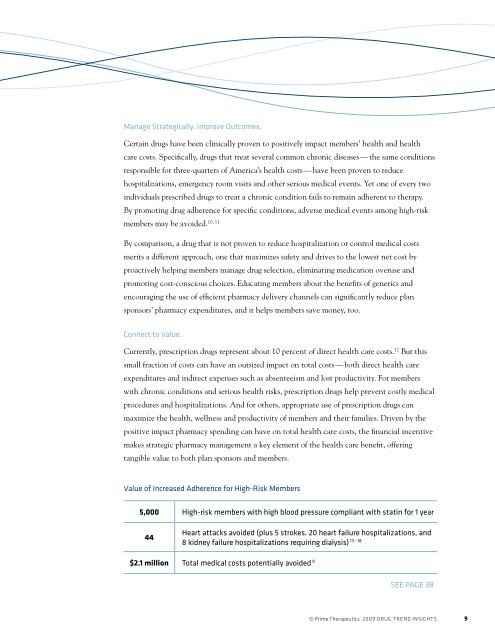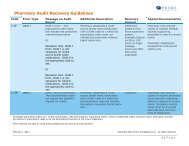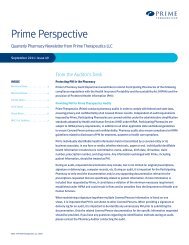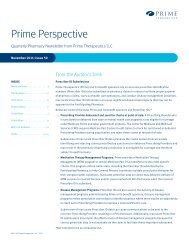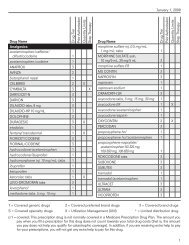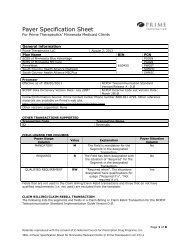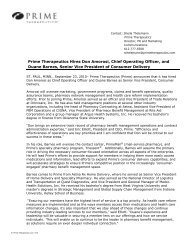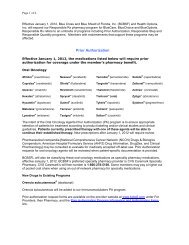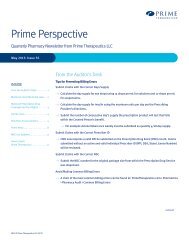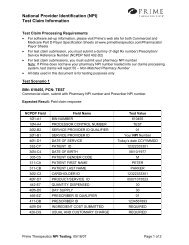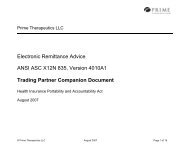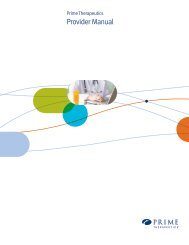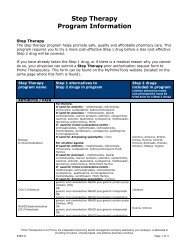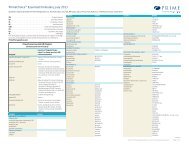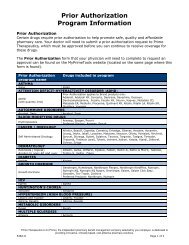2009 Drug Trend Insights - Prime Therapeutics
2009 Drug Trend Insights - Prime Therapeutics
2009 Drug Trend Insights - Prime Therapeutics
You also want an ePaper? Increase the reach of your titles
YUMPU automatically turns print PDFs into web optimized ePapers that Google loves.
Manage Strategically. Improve Outcomes.Certain drugs have been clinically proven to positively impact members’ health and healthcare costs. Specifically, drugs that treat several common chronic diseases — the same conditionsresponsible for three-quarters of America’s health costs — have been proven to reducehospitalizations, emergency room visits and other serious medical events. Yet one of every twoindividuals prescribed drugs to treat a chronic condition fails to remain adherent to therapy.By promoting drug adherence for specific conditions, adverse medical events among high-risk10, 11members may be avoided.By comparison, a drug that is not proven to reduce hospitalization or control medical costsmerits a different approach, one that maximizes safety and drives to the lowest net cost byproactively helping members manage drug selection, eliminating medication overuse andpromoting cost-conscious choices. Educating members about the benefits of generics andencouraging the use of efficient pharmacy delivery channels can significantly reduce plansponsors’ pharmacy expenditures, and it helps members save money, too.Connect to Value.Currently, prescription drugs represent about 10 percent of direct health care costs. 12 But thissmall fraction of costs can have an outsized impact on total costs — both direct health careexpenditures and indirect expenses such as absenteeism and lost productivity. For memberswith chronic conditions and serious health risks, prescription drugs help prevent costly medicalprocedures and hospitalizations. And for others, appropriate use of prescription drugs canmaximize the health, wellness and productivity of members and their families. Driven by thepositive impact pharmacy spending can have on total health care costs, the financial incentivemakes strategic pharmacy management a key element of the health care benefit, offeringtangible value to both plan sponsors and members.Value of Increased Adherence for High-Risk Members5,000 High-risk members with high blood pressure compliant with statin for 1 year44Heart attacks avoided (plus 5 strokes, 20 heart failure hospitalizations, and13 – 188 kidney failure hospitalizations requiring dialysis)$2.1 million Total medical costs potentially avoided 9 See page 38© <strong>Prime</strong> <strong>Therapeutics</strong> <strong>2009</strong> <strong>Drug</strong> <strong>Trend</strong> <strong>Insights</strong>9


